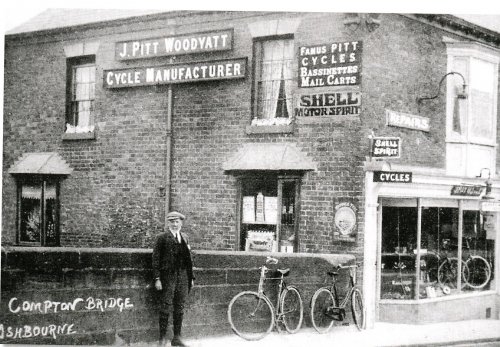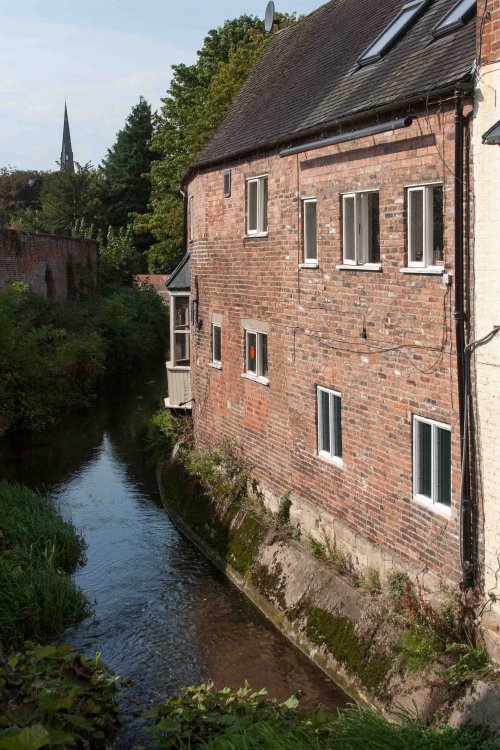The 1851 census listed one house in the yard as having 15 people living there, 13 of them Irish labourers.
Early photographs show this as the Three Horse Shoes public house. It was subsequently converted into a cycle shop and later Foster Brother's fishing tackle shop. This shop closed in 2000, but Foster's cane rods are still highly valued and are collected by enthusiasts.
The lower building to the rear was Ashbourne's workhouse until 1846. If you look over the bridge at the side of the building, you will see a low level window, which was part of the workhouse. Its proximity to the River meant that flooding was often a problem. The yard on the other side of the building was Work House Yard which had some of the worst of the overcrowded slum properties in the Town. It contained lodgings for labourers and in the 1851 census one house had 15 people listed, 13 of them Irish labourers. Conditions in the Yard were poor and as late as 1893, 8 people died in this yard as a result of a typhoid outbreak. The yard was finally cleared in the early 20th Century by means of public health legislation.
Before the 1834 Poor Law Act, individual townships such as Ashbourne, Sturston and Clifton were responsible for looking after their own poor using a "poor rate" levied on property owners. The infirm poor were provided with “outdoor relief”, whilst the able bodied poor were sent to a workhouse, and the idle poor and vagrants were sent to a house of correction. Ashbourne’s House of Correction is the large prison-like building at the bottom of Derby Road.
After the 1834 Act, joint workhouses under Poor Law Unions were adopted to reduce costs, and the workhouses were deliberately made as unattractive as possible to act as a deterrent to the able-bodied poor. For example, families were seperated with men and women in different parts of the building.
Following this Act, the Ashbourne Poor Law Union was formed and in 1848 a new workhouse was opened on Belle Vue Road with accommodation for 160 paupers from a radius of 10 miles around Ashbourne. This workhouse was later converted into a St Oswald’s Community Hospital, but will be demolished in the near future to make way for housing now that a new Community Hospital is open on Clifton Road.








